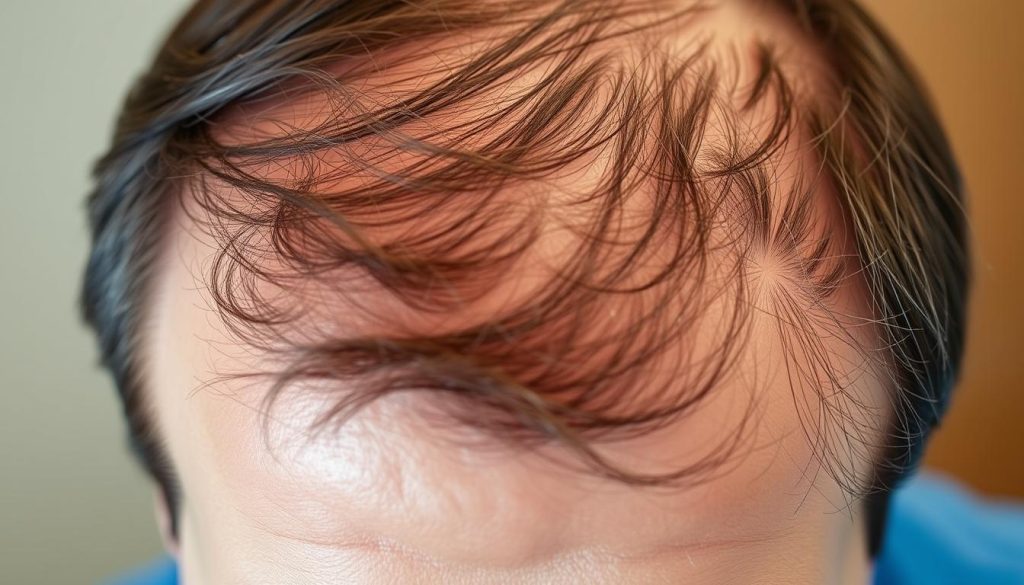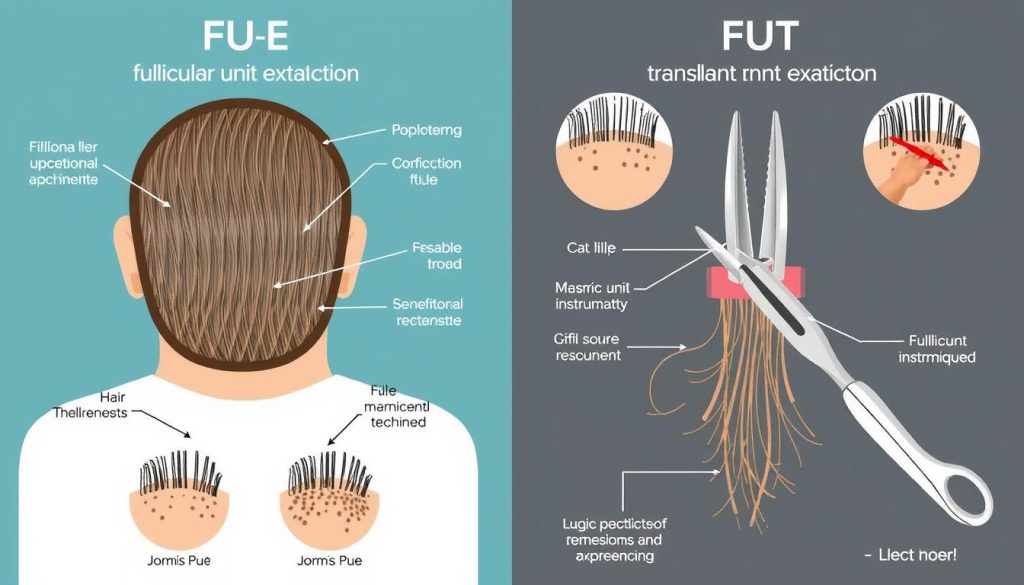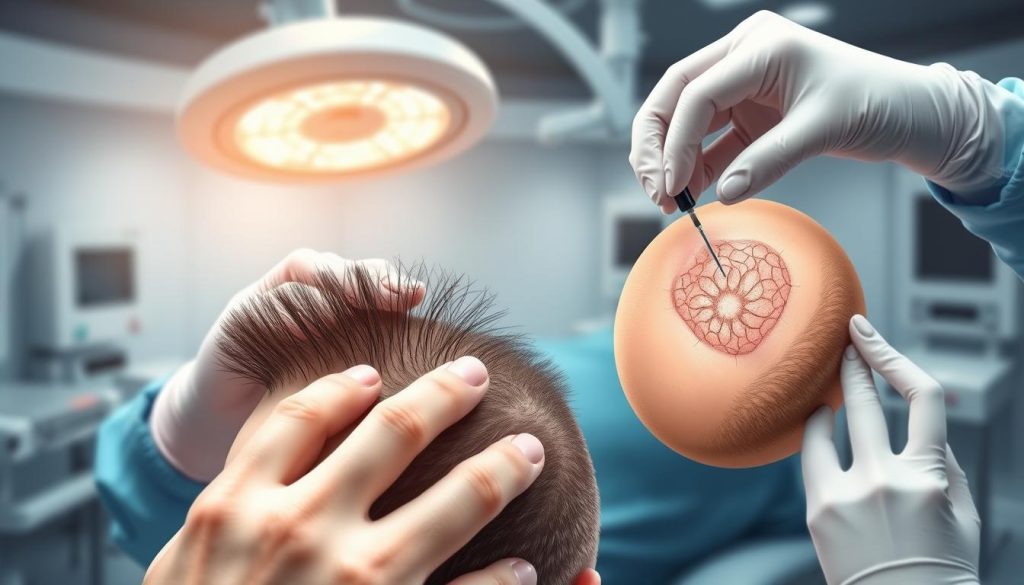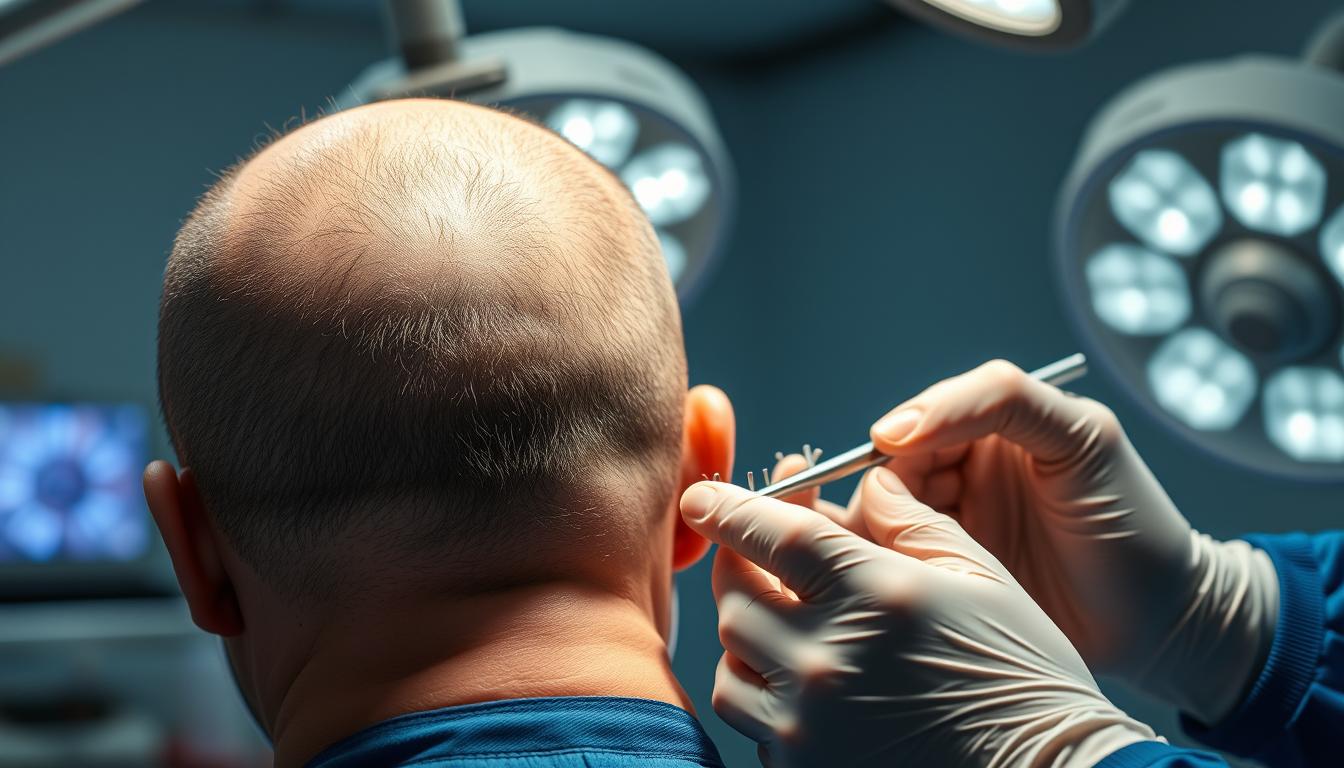Hair transplant surgery is a specialized medical procedure designed to restore hair in areas of the scalp affected by thinning or baldness.
The procedure involves relocating hair follicles from donor sites to recipient areas experiencing hair loss. Modern techniques have evolved significantly, offering natural-looking results.
Hair restoration surgery represents a significant investment in both time and resources, making it essential to have complete information before proceeding.
Key Takeaways
- Understand the causes of hair loss and the available hair restoration options.
- Learn about the different types of hair transplant procedures available today.
- Discover the step-by-step surgical process and recovery expectations.
- Find out the timeline for visible results after surgery.
- Selecting the right specialist for your hair transplant surgery is crucial.
Understanding Hair Transplant Surgery

Understanding the intricacies of hair transplant surgery is crucial for individuals experiencing hair loss. Hair transplant surgery is a medical procedure that involves relocating hair follicles from one part of the body to another, typically to restore hair growth in balding areas.
What Causes Hair Loss
Hair loss is primarily caused by a combination of aging, hormonal changes, and genetics. Men and women experience hair loss differently; men often see hair loss at the temples and crown, while women typically experience thinning at the top of the head.
Benefits of Hair Restoration
Hair restoration through transplant surgery offers numerous benefits, including enhanced self-confidence and a natural appearance. Modern techniques ensure minimal scarring, allowing patients to style their hair without revealing signs of the procedure.
The benefits of hair restoration extend beyond cosmetic improvements, often resulting in positive psychological effects. By understanding the cause of hair loss, individuals can determine if they are ideal candidates for hair transplantation.
Types of Hair Transplant Procedures

Modern hair transplant surgery primarily utilizes two advanced techniques: Follicular Unit Extraction (FUE) and Follicular Unit Transplantation (FUT). These methods have distinct advantages and are chosen based on individual patient needs.
Follicular Unit Extraction (FUE)
FUE involves harvesting individual hair follicles directly from the donor area using a micro-punch tool, leaving tiny dot-like scars that are virtually invisible once healed. This method is particularly advantageous for patients who prefer to wear their hair very short.
Follicular Unit Transplantation (FUT)
FUT, also known as the “strip method,” involves removing a narrow strip of hair-bearing skin from the back of the scalp, dissecting it into individual follicular units, and then transplanting these units to the recipient areas. While FUT may leave a linear scar, it often allows surgeons to harvest more grafts in a single session.
The Hair Transplant Procedure
A hair transplant is a surgical procedure that redistributes hair from one part of the scalp to another. This process involves a series of steps that are crucial for achieving the desired outcome.
Preparation and Consultation
The journey begins with a comprehensive consultation where the surgeon evaluates hair loss patterns and discusses expectations. The surgeon examines the scalp condition, hair quality, and may use digital imaging to project potential results, helping to develop realistic expectations.
During the Surgery
On the day of the surgery, the surgeon marks the recipient areas and donor site, followed by the administration of local anesthesia. For FUT procedures, a strip of scalp is excised from the back of the head and dissected into individual follicular units. In FUE procedures, individual follicular units are extracted directly from the donor area using specialized micro-punches.

Immediate Post-Procedure Care
After the grafts are in place, they appear as small wounds that heal quickly. The surgical team provides detailed instructions for post-operative care, including how to sleep with minimal pressure on the grafts and specific washing protocols to protect the newly transplanted follicles.
Recovery After Hair Transplant Surgery
Recovery after hair transplant surgery is a critical phase that requires careful attention and adherence to post-surgery instructions. The process involves several steps that patients must follow to ensure optimal results from the hair transplant surgery.
First Week After Surgery
During the first 24-48 hours after surgery, patients may experience mild discomfort, swelling, and tightness in the scalp, which can be managed with prescribed pain medication and keeping the head elevated while sleeping. Small scabs will form around each transplanted graft within the first few days; these are a normal part of the healing process.
| Day | Activity Level | Care Instructions |
|---|---|---|
| 1-2 | Rest | Keep head elevated, use pain medication as directed |
| 3-7 | Light activities | Avoid strenuous exercise, swimming, and direct sun exposure |
Long-Term Healing Process
Around 2-4 weeks post-surgery, patients will likely experience “shock loss,” where the transplanted hairs fall out—this is a normal part of the hair restoration process. The long-term healing process involves a dormant phase lasting 3-4 months, during which the transplanted follicles recover from the trauma of transplantation before entering an active growth phase.

Throughout the recovery period, patients should maintain regular follow-up appointments with their surgical team to monitor healing progress and address any concerns that may arise.
Expected Results and Timeline
Initial Growth Phases
During the initial growth phase (1-3 months post-procedure), patients may experience “shock loss” as transplanted hairs shed. This is a normal physiological response. New hair growth typically begins around the 3-4 month mark, with hairs initially being fine and lacking density.
Final Results
Between months 6-9, significant improvement is noticeable as approximately 60-70% of transplanted follicles enter an active growth phase. Final results are generally visible around 12-18 months post-surgery, with transplanted hair fully matured and blended with existing hair.
Factors Affecting Success
Several factors influence the success of hair replacement procedures, including the surgeon’s skill, donor hair quality, patient health, and adherence to post-operative care. As
“The art of hair restoration is not just about transplanting hair, but creating a natural look that enhances the patient’s appearance.”
Realistic expectations and proper care are crucial for optimal outcomes.
Choosing the Right Hair Restoration Specialist
The success of hair transplant surgery heavily relies on the expertise of the hair restoration specialist. To achieve natural-looking results, it’s crucial to select a qualified and experienced surgeon who specializes in hair restoration. During the consultation, the surgeon will examine your scalp and consider your overall health, hair loss pattern, and expectations from the transplant surgery.
When researching potential surgeons, prioritize those with a focus on hair restoration and verify their credentials, ensuring they are board-certified and members of respected organizations like the International Society of Hair Restoration Surgery (ISHRS). Consider factors such as the technique used, number of grafts needed, and potential risks to make an informed decision.
FAQ
What is the ideal candidate for a hair restoration procedure?
Individuals experiencing baldness or thinning in specific areas of the scalp, with sufficient donor follicles in other areas, are ideal candidates for a hair restoration procedure.
How long does it take to recover from a hair transplant procedure?
The recovery process typically takes around 7-10 days, during which the patient may experience some scalp discomfort, swelling, or redness, but these symptoms usually subside with proper post-procedure care.
What are the benefits of choosing Follicular Unit Extraction (FUE) over Follicular Unit Transplantation (FUT)?
FUE is a more minimally invasive procedure, resulting in less scarring and a faster recovery time, making it an attractive option for those seeking a more discreet hair replacement solution.
How long does it take to see the final results of a hair transplant procedure?
The final results of a hair restoration procedure can take several months to a year or more to become fully apparent, as the grafts need time to settle and the new hair growth to mature.
Are there any potential risks or complications associated with hair transplant surgery?
As with any surgical procedure, there are potential risks, including infection, scarring, or graft failure, but these can be minimized by choosing a qualified and experienced surgeon and following proper post-procedure care instructions.
Can hair transplant surgery be performed on areas other than the scalp?
While hair restoration is most commonly performed on the scalp, it can also be used to restore hair growth in other areas, such as the beard or eyebrows, using the same follicular unit techniques.
